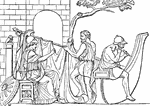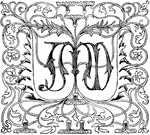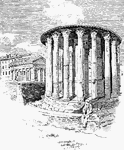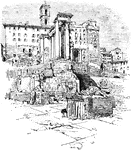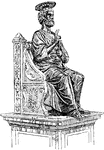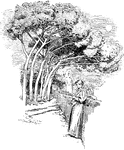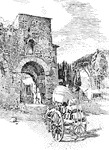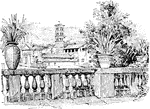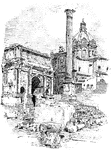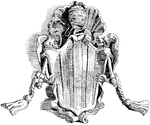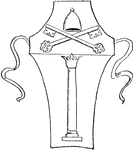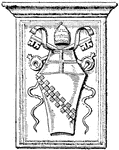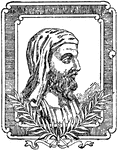
Plutarch
"Plutarch, as the great interpreter of Greece and Rome, exerted on generations succeeding him in influence…

Amphorae
"A vessel used for holding wine, oil, honey. The following cut represents amphorae in the British Museum.…

Ancile
"Ancilia carried by Salii. The sacred shield carried by the Salii, and made of bronze. The original…

Marcus Aurelius Antoninus
"Marcus Aurelius Antoninus stands almost alone in the history of the world as a philosopher and philanthopist…

Byzantine court
"Constantine, the first Christian emperor, removed the capital of the world-empire from Rome to Byzantium,…

Julian
"Thus the prince, both when present and when coming, was alike victorius: and these things he achieved…

Antefixa
"Antefixa representing Minerva superintending the construction of the Ship Argo. Antefixa are terra-cottas,…
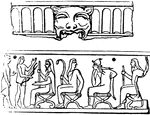
Antefixa
"The two imperfect antefixa, are amoung those found at Velletri, and described by Carloni. Antefixa…

Arcus
"The bow used for shooting arrows, is one of the most ancient of all weapons, but is characteristic…
Arcus
"The bow used for shooting arrows, is one of the most ancient of all weapons, but is characteristic…

Arcus
"The bow used for shooting arrows, is one of the most ancient of all weapons, but is characteristic…
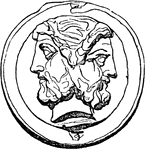
As
"The unit of value in the Roman and old Italian coinages, was made of copper, or of the mixed metal…
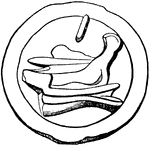
As
"The unit of value in the Roman and old Italian coinages, was made of copper, or of the mixed metal…
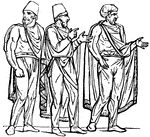
Bracae
"Trowsers, pantaloons, were common to all the nations which encircled the Greek and Roman population,…
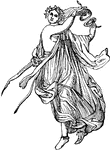
Calceus
"A shoe or boot, anything adapted to cover and preserve the feet in walking. The use of shoes was by…

Calceus
"A shoe or boot, anything adapted to cover and preserve the feet in walking. The use of shoes was by…

Sarcophagus of Scipio
"Sarcophagus, plural Sarcophagi, is a kind of stone used among the Greeks for making coffins, and so…

Roman galley
"Elated by the victory, the Romans now determined to drive Carthage out of the island altogether. This,…

Cardo
A hinge or pivot. The first figure, in the annexed woodcut, is designed to show the general form of…
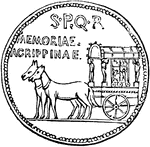
Carpentum
"A cart; also a two-wheeled carriage enclosed, and with an arched or sloping cover overhead. The carpentum…
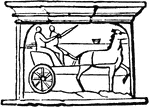
Cisium
"A light open carriage with two wheels, adapted to carry two persons rapidly from place to place. The…

Clipeus
"The large shield worn by the Greeks and Romans, which was originally of the circular form, and is said…
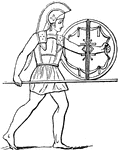
Clipeus
"The large shield worn by the Greeks and Romans, which was originally of the circular form, and is said…

Cyathus
"A Greek and Roman liquid measure, containing one-twelfth of the sextarius, or .0825 of a pint English.…
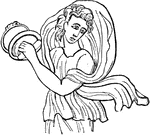
Cymbalum
"A musical instrument, in the shape of two half globes, which were held one in each hand of the performer,…
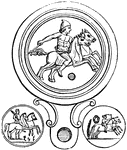
Desultor
"A rider in the Roman games, who generally rode two horses at the same time, sitting on them without…
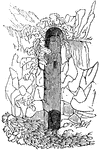
Emissarium
"An artificial channel formed to carry off any stagnany body of water, like the sluices in modern use.…

Fastigium
"An ancient Greek or Roman temple, of rectangular construction, is terminated at its upper extremity…

Columns of Domitian
"The columns of cipollino, which belonged to the Palace of Domitian." — Young, 1901
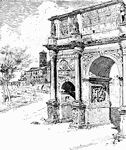
Arch of Constantine
"This arch is the most modern and the best preseved of all the buildings which remain of the Imperial…
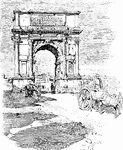
Arch of Titus
"In the time of Trajan, the Arch of titus and the Colossus of Nero (a gilt bronze statue 120 feet high),…

Columns of Temple of Castor
"Columns of Temple of Castor, Temple of Augustus, and Palatine Hill." — Young, 1901

Cloister of the Lateran
"The Benedictine system enjoined three virtues as essential; solitude, humility, and obedience." —…






